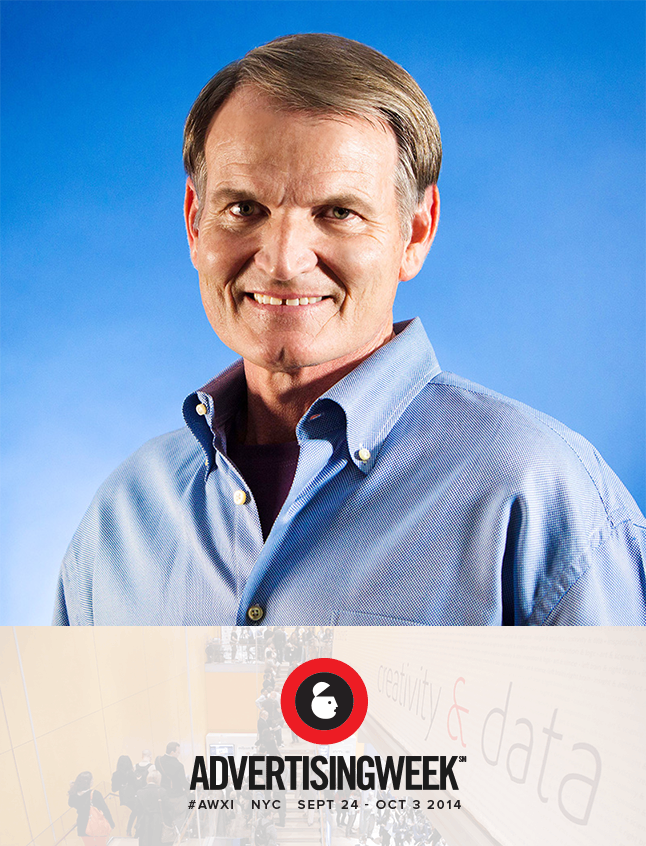 Co-founder and CEO of XAPPmedia, Pat Higbie is one of four panelists on tomorrow’s Advertising Week panel, “Out of Touch but Still Connected: Today’s Ultramobile Consumers.” He shares how XAPP got involved in the advertising industry and how mobile continues to alter the landscape of Internet radio.
Co-founder and CEO of XAPPmedia, Pat Higbie is one of four panelists on tomorrow’s Advertising Week panel, “Out of Touch but Still Connected: Today’s Ultramobile Consumers.” He shares how XAPP got involved in the advertising industry and how mobile continues to alter the landscape of Internet radio.
How did you wind up working on the advertising side of the business?
When my XAPP co-founders and I looked at areas that could benefit from the combination of mobile and voice technology, mobile audio apps quickly bubbled to the top. What is more natural than responding to audio with voice? The more we researched the market for mobile audio apps, the more we realized how large it was in terms of listening hours. However, when we discovered that publishers were struggling to make money, we realized there was an opportunity to help audio publishers monetize their apps with interactive audio adverting. Frankly, we were surprised that no one had done it already. It turned out that the XAPP team had the right combination of mobile, cloud and voice skills to build a solution that fulfilled a need.
What surprised you most when you first started working with advertisers?
I was very surprised at how little measurable data radio advertisers had at their disposal. Most advertisers felt like they were flying blind and the ratings systems didn’t provide much insight or comfort. The entire system seemed arcane and wedded to 1970’s technology approaches.
What continues to surprise you?
I’m typically surprised at how few questions advertisers ask after they hear a XAPP Ad. They get the value immediately and want to talk about how to use it. We have all of this data on higher conversion rates, but they don’t need to see it because it’s obvious to them that the response rates will be higher. They are constantly thinking up new, innovative ways to use XAPP Ads to engage consumers and are ready to move forward.
How has advertising in radio/audio changed from 5 or 10 years ago?
Until my partners and I started XAPPmedia, my exposure to radio adverting was primarily as a consumer. One reason we were attracted to the market was because we were seeing radio and desktop paradigms (i.e., audio ads with companion banners) being applied to mobile audio but they weren’t driving the measurably higher response rates that advertisers are craving.
How have radio/audio advertisers changed in recent years, if at all?
In 2013, it seemed like Internet radio advertising was a novelty spend. One year later, it is clear that many large advertisers are considering Internet radio as a standard part of their radio ad budget. They are simply following the audience and getting better data in the process. This is an important trend that broadcast radio needs to recognize.
What do you think are the most important trends in radio/audio today?
The shift to mobile listening on smartphones is increasing audio consumption and changing consumer habits rapidly. Total audio consumption time is rising; it is shifting from broadcast radio to mobile apps and consumers are increasingly listening while ultramobile (e.g., while driving, exercising, walking, working).
How is mobile changing the radio industry?
Mobile is changing the radio industry economics and consumption patterns. First, you can see from market data that traditional radio audiences are migrating to mobile platforms, which have different revenue models. It’s not about spots and ratings, it’s about impressions and conversions. When everything is measurable, ad performance is as important as reach.
The second major trend is the move to ultramobile listening. Research shows that more than half of all listening takes place while consumers are engaged in ultramobile activities. Because their eyes and hands are occupied on another task, they cannot interact with visual media. Beyond this, our data shows that 78% of all ads are served while the audio app is in background behind a blank screen. In other words, more than three quarters of all mobile audio advertising today is unable to take advantage of the interactive nature of mobile.
When users are ultramobile or their apps are in the background, voice is a natural way for them to respond to interactive audio advertising and content. The key is to make the user experience simple, spontaneous and convenient and that’s what drives us everyday at XAPPmedia. We exist to give consumers a voice and to connect them with brands and content.
Panelist Spotlight, NPR/National Public Media: Bryan Moffett
Panelist Spotlight, Spotify: Brian Benedik
Panelist Spotlight, AdLarge Media: Cathy Csukas
Get your free ticket for AWXI
The panel will be held on September 30th on the Microsoft Stage in Times Square in New York City from 10:30-11:30am. XAPPmedia has a limited number of free tickets for our guests to attend the panel discussion. If you would like to reserve a free ticket to this Advertising Week event, please click the button below to register.
